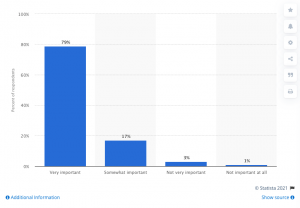— July 21, 2017
It is not easy to be authentic on social. Even if your client’s posts are relaxed and calm and don’t sell stuff, chances are they will turn up the noise every now and then. Take a moment to look through some social feeds today and we bet you will see a strong call to action almost instantly. And that kind of stuff is starting to grate a little.
The game is changing. Now that everyone is on social media it’s time to work hard on standing out from the crowd (or, as you know it, the competition). And because there is so much out there on social media, you have to get those calls-to-action and contact points right.
In 2017 (and we suspect for the next couple of years at least) it’s even harder to be authentic. By ‘authentic’ we mean genuine, real and effective on social.

Of course, you need to get your audience to do something as they encounter the client’s work on Facebook, Instagram and Twitter (to name just three channels). But it’s the way you ask that matters in these times.
Ignoring the following tips could well mean that you seem just like any other brand that wants to sell something. And that is not a great place to be.
The question and the response
Way back in the nineties when the Internet was still new, comments on articles were the most important reason for a brand’s online existence. The more comments you got as a brand, the more likely you would be seen as a valuable brand.
Companies openly requested comments and gained new audiences through doing so. It became such a race that companies either garnered comments or simply turned them off. Having comments was such a badge of honour that you would hide a ‘no comment’ blog.
We live in a world that has had its collective attention span severely diminished. It is harder and harder to keep people focused and take up more than a few seconds of their time. When it comes to comments on a brand’s social feed, the whole process should be incredibly easy to deal with. If you want to engage your audience and encourage them to interact through commenting on your social platforms, keep everything really, really simple.
Binary questions, for example, which require a ‘yes’ or a ‘no’ work the best. Surveys that simply ask the audience to give that kind of short answer generally drive responses. When asking your audience a question or suggesting that they give their response through a survey or a comment, keep it as simple as you can. The general rule is clear. If the question or survey cannot be responded to in nothing more than a few seconds, it’s a waste of time having the questions there.

So ask questions as part of your quest for engagement. Just keep it simple and quick. We are literally talking seconds here.
The competitions
We have covered competitions and contests before, and we cannot deny that they are extremely effective in bringing responses and engagement. If they are targeted at your audience and their likes, you are onto a good thing.
But like everything else on social media, contests and competitions can become a little boring. And if they are incredibly complicated this can annoy an audience. It is best to make sure, before you announce a competition, that there is no hugely complicated process to go through if someone wants to enter. The more trouble you put your audience through, the less likely they will enter. And that includes competitions that have a great prize attached.
Audiences are pretty much used to entering competitions and filling out surveys on social media these days. To make yours that bit different, make them easy, one word affairs. You’ll find that the simpler your attempts at engagement, the more likely it is that you will receive that engagement.

This whole thing is best clarified through the idea of ‘flash contests’. One or two day contests that simply allow people to get their entry in quickly. Photo contests are the very best way to do this. By having your audience engaged through the submission of photos, and keeping the whole thing down to a couple of days, you’ve got a quick turnaround, and the maximum chance of engagement through the simple, photo-based entry.
Say thank you
Audiences are crying out for a human connection online. While your customer service team may be incredibly effective, how’s your gratitude measuring up?
It’s important to be thankful for your audience. They keep you going, they buy your stuff and they tell others about your amazing products. Start saying thank you every time an audience member posts a great review. Make them feel special.
It takes a brand that is focused on social listening as a priority, but once you are in that place you should be able to present a human approach by responding to anything that requires a thank you quickly. You’d be surprised how much an audience appreciates this kind of commitment. Especially in a world where chatbots are kind of taking over. Personalised ‘thank you’ posts that reference the post the follower brought to the table are highly effective.

Conversations
Take that last point up a notch and actually have conversations with people. Start having real and human conversations. Send a message out of the blue to someone who has been loyal for some time and interview them.
Give someone a very special and very public gift or award and then chat to them in real time. The more you do this the more authentic you seem. It’s hard for an audience to expect anything other than an automated response these days. Your brand (or the brand you represent) can step outside of this and actually ‘be social’.
The more social media dehumanises and becomes automated, the more important it is for brands to actually start talking to an audience, responding to them, and generally making them feel special. We think it’s the new authenticity. It can’t be faked, and it can’t be automated.

Digital & Social Articles on Business 2 Community
(67)






